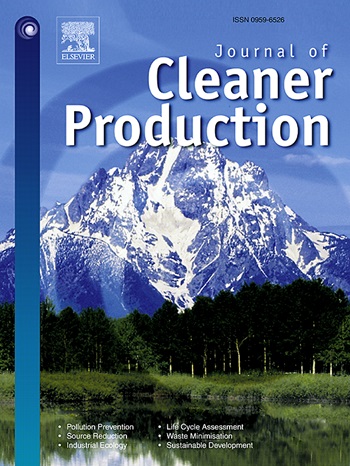Preliminary study on influence of UV radiation on the light transmittance of light-transmitting concrete
IF 9.7
1区 环境科学与生态学
Q1 ENGINEERING, ENVIRONMENTAL
引用次数: 0
Abstract
This study presented a preliminary investigation into the effect of ultraviolet (UV) radiation on the light transmittance properties of light-transmitting concrete (LTC) embedded with polymethyl methacrylate (PMMA) optical fibres. Light transmittance tests, FTIR, UV–VIS spectroscopy, and SEM analyses were conducted on LTC and PMMA optical fibres to assess the impact of UV radiation on the light transmittance of LTC. Following 1 h of accelerated UV exposure, surface smoothing, oxidation and densification was induced rather than crosslinking or chain scission in the PMMA fibres, resulting in enhanced light transmittance of the LTC. The extent of surface modification and the corresponding improvement in optical performance were found to be fibre diameter-dependent. Fibres with a 1.0 mm diameter exhibited the most uniform microstructural rearrangement and the highest improvement in light transmittance after UV exposure, whereas larger fibres (2.0 mm) and smaller fibres (0.75 mm) showed suboptimal changes attributed to non-uniform oxidation and limited exposed surface area, respectively. The short-term UV exposure did not affect the compressive strength of LTC. These findings provide insight into the mechanisms driving optical performance enhancement of LTC under short-term UV exposure and offer practical guidance for fibre diameter selection in LTC applications, considering trade-offs between optical performance, durability and cost. Further investigations involving prolonged UV exposure and environmental weathering effects are recommended to assess the long-term durability of LTC in real-world conditions.
紫外线辐射对透光混凝土透光率影响的初步研究
本文初步探讨了紫外线辐射对聚甲基丙烯酸甲酯(PMMA)光纤包埋的透光混凝土(LTC)透光性能的影响。对LTC和PMMA光纤进行透光率测试、FTIR、UV - vis光谱和SEM分析,以评估紫外线辐射对LTC透光率的影响。在加速紫外线照射1小时后,PMMA纤维的表面光滑、氧化和致密化被诱导,而不是交联或链断裂,导致LTC的透光性增强。发现表面改性的程度和相应的光学性能的改善与纤维直径有关。直径为1.0 mm的纤维在紫外照射后表现出最均匀的微观结构重排和最高的透光率改善,而较大的纤维(2.0 mm)和较小的纤维(0.75 mm)分别由于氧化不均匀和暴露表面积有限而表现出次优的变化。短期紫外线照射对LTC的抗压强度没有影响。这些发现为LTC在短期紫外线照射下提高光学性能的机制提供了深入的见解,并为LTC应用中纤维直径的选择提供了实用指导,同时考虑了光学性能、耐用性和成本之间的权衡。建议进行进一步的研究,包括长时间的紫外线暴露和环境风化影响,以评估LTC在实际条件下的长期耐久性。
本文章由计算机程序翻译,如有差异,请以英文原文为准。
求助全文
约1分钟内获得全文
求助全文
来源期刊

Journal of Cleaner Production
环境科学-工程:环境
CiteScore
20.40
自引率
9.00%
发文量
4720
审稿时长
111 days
期刊介绍:
The Journal of Cleaner Production is an international, transdisciplinary journal that addresses and discusses theoretical and practical Cleaner Production, Environmental, and Sustainability issues. It aims to help societies become more sustainable by focusing on the concept of 'Cleaner Production', which aims at preventing waste production and increasing efficiencies in energy, water, resources, and human capital use. The journal serves as a platform for corporations, governments, education institutions, regions, and societies to engage in discussions and research related to Cleaner Production, environmental, and sustainability practices.
 求助内容:
求助内容: 应助结果提醒方式:
应助结果提醒方式:


